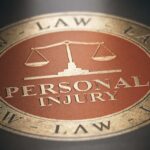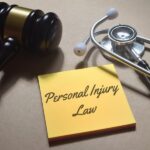Personal injury lawyer in New York: Navigating the complexities of personal injury claims in the bustling city requires expert legal guidance. From car accidents to medical malpractice, understanding your rights and pursuing just compensation can be a daunting task. This guide provides a comprehensive overview of the process, equipping you with the knowledge to make informed decisions and secure the best possible outcome.
This exploration delves into the various types of personal injury cases, the crucial steps in filing a claim, and the common pitfalls to avoid. We’ll examine the role of insurance companies, negotiation strategies, and the importance of finding a reputable lawyer who will champion your case. Ultimately, our aim is to empower you with the information necessary to navigate the legal landscape effectively and confidently.
Types of Personal Injury Cases in New York
Navigating the complexities of personal injury law in New York can be daunting. Understanding the various types of cases and the potential outcomes is crucial for anyone seeking legal recourse after an accident or injury. This section Artikels some of the most common personal injury cases handled by lawyers in New York, detailing their causes and potential damages.
New York’s robust legal system provides avenues for individuals to seek compensation for injuries caused by the negligence or wrongdoing of others. The specific details of each case will vary significantly depending on the circumstances, but some common threads run through many personal injury claims.
Securing competent legal representation after a personal injury in New York is crucial. The process can be complex, navigating insurance companies and legal procedures. If you’re considering similar cases outside of New York, researching firms like those found by searching for a midland personal injury lawyer can offer insight into the variations in legal approaches across different jurisdictions.
Ultimately, finding the right personal injury lawyer in New York, or elsewhere, hinges on thorough research and a clear understanding of your needs.
Car Accidents
Car accidents are a leading cause of personal injury claims in New York. These cases often involve collisions resulting from driver negligence, such as speeding, drunk driving, distracted driving, or failure to obey traffic laws. Damages can include medical expenses, lost wages, pain and suffering, and property damage. The severity of injuries, from minor whiplash to catastrophic brain injuries, significantly impacts the potential settlement. For example, a rear-end collision causing whiplash might result in a smaller settlement compared to a head-on collision resulting in a traumatic brain injury and long-term disability.
Motorcycle Accidents
Motorcycle accidents often result in more severe injuries than car accidents due to the lack of protective shielding around the rider. Common causes include negligent drivers failing to yield the right-of-way, reckless driving, and road hazards. Damages are similar to car accidents, but the severity of injuries frequently leads to higher settlement amounts. A case involving a broken leg and road rash might differ drastically from one resulting in paralysis.
Premises Liability
Premises liability cases involve injuries sustained on someone else’s property due to hazardous conditions. This could include slips and falls on wet floors, tripping hazards, inadequate lighting, or dangerous structural defects. Property owners have a legal duty to maintain a safe environment for visitors. Failure to do so can lead to liability for injuries. Damages may include medical bills, lost income, and pain and suffering. A simple slip and fall resulting in a minor sprain might have a lower settlement than a fall from a significant height resulting in a severe fracture.
Medical Malpractice
Medical malpractice occurs when a healthcare professional’s negligence or misconduct causes harm to a patient. This could involve misdiagnosis, surgical errors, medication errors, or failure to provide proper care. Proving medical malpractice requires demonstrating a breach of the standard of care and a direct causal link between the negligence and the patient’s injuries. Damages can be substantial, encompassing medical expenses, lost wages, pain and suffering, and potentially punitive damages in cases of gross negligence. A misdiagnosis leading to a delayed treatment might have a different settlement outcome compared to a surgical error resulting in permanent disability.
Construction Accidents
Construction sites are inherently dangerous environments. Accidents can occur due to unsafe working conditions, inadequate safety equipment, or negligence on the part of contractors or property owners. Injuries can range from minor cuts and bruises to catastrophic injuries like amputations or fatalities. Workers’ compensation may cover some injuries, but additional claims against negligent parties might be possible. Damages often include medical expenses, lost wages, rehabilitation costs, and pain and suffering. The severity of the injuries, including the possibility of long-term disability, will impact the settlement.
| Case Type | Common Causes | Typical Damages | Average Settlement Range |
|---|---|---|---|
| Car Accidents | Negligent driving, drunk driving, distracted driving | Medical expenses, lost wages, pain and suffering, property damage | $5,000 – $1,000,000+ |
| Motorcycle Accidents | Negligent drivers, road hazards, reckless driving | Medical expenses, lost wages, pain and suffering, property damage | $10,000 – $1,000,000+ |
| Premises Liability | Slips and falls, inadequate lighting, dangerous conditions | Medical expenses, lost wages, pain and suffering | $1,000 – $500,000+ |
| Medical Malpractice | Misdiagnosis, surgical errors, medication errors | Medical expenses, lost wages, pain and suffering, punitive damages | $10,000 – $1,000,000+ |
| Construction Accidents | Unsafe working conditions, inadequate safety equipment | Medical expenses, lost wages, rehabilitation costs, pain and suffering | $20,000 – $1,000,000+ |
Finding a Reputable Personal Injury Lawyer in New York
Navigating the legal landscape after a personal injury can be overwhelming. Choosing the right lawyer is crucial for a successful outcome. This section will guide you through the process of finding a reputable personal injury lawyer in New York, ensuring you have the best possible representation.
Finding the right legal counsel requires careful consideration. A thorough vetting process is essential to ensure you’re working with a lawyer who possesses the necessary skills, experience, and ethical standards to handle your case effectively.
Qualities to Look for in a New York Personal Injury Lawyer
Selecting a personal injury lawyer involves assessing several key qualities. These qualities are essential for ensuring your case receives the attention and expertise it deserves. Consider these factors when making your decision.
- Extensive Experience in Personal Injury Law: Look for lawyers with a proven track record of success in handling cases similar to yours. Years of experience often translate to a deeper understanding of the complexities of personal injury law in New York.
- Strong Reputation and Positive Client Reviews: Research the lawyer’s reputation through online reviews, testimonials, and referrals. Positive feedback from previous clients can provide valuable insights into their professionalism and effectiveness.
- Excellent Communication Skills: A lawyer who communicates clearly and regularly keeps you informed throughout the legal process is essential. Effective communication ensures you understand the progress of your case and feel confident in your representation.
- Proven Track Record of Settlements and Verdicts: Examine the lawyer’s success rate in obtaining favorable settlements or verdicts for their clients. This data provides a tangible measure of their competence and ability to achieve positive outcomes.
- Compassionate and Client-Focused Approach: Choose a lawyer who demonstrates empathy and understanding towards your situation. A client-focused approach ensures your needs and concerns are prioritized throughout the legal process.
Verifying a Lawyer’s Credentials and Experience in New York
It’s crucial to independently verify a lawyer’s credentials and experience. This ensures you’re engaging a qualified and legitimate legal professional.
- Check with the New York State Bar Association: The New York State Bar Association’s website provides a directory of licensed attorneys. You can verify a lawyer’s license status, disciplinary history, and contact information.
- Review Online Professional Profiles: Websites such as Avvo, Martindale-Hubbell, and Justia provide lawyer profiles with ratings, reviews, and details on their practice areas and experience. These resources offer a broader perspective on a lawyer’s reputation.
- Contact Previous Clients (if possible): If possible, reaching out to previous clients can provide firsthand accounts of their experiences with the lawyer. This direct feedback can be invaluable in assessing their professionalism and effectiveness.
Finding and Interviewing Potential Lawyers
A systematic approach to finding and interviewing potential lawyers is vital. This ensures a thorough evaluation of each candidate and facilitates an informed decision.
- Create a List of Potential Lawyers: Begin by compiling a list of potential lawyers based on online research, referrals, and recommendations. Consider lawyers specializing in the specific type of personal injury case you’re facing.
- Schedule Initial Consultations: Contact the lawyers on your list to schedule initial consultations. Most personal injury lawyers offer free initial consultations to discuss your case and answer your questions.
- Prepare Questions for the Consultation: Develop a list of questions to ask each lawyer during the consultation. This ensures you gather the necessary information to make an informed decision. Examples include questions about their experience with similar cases, their fee structure, and their approach to case strategy.
- Evaluate the Lawyer’s Communication Style and Personality: Pay attention to the lawyer’s communication style and personality during the consultation. Choose a lawyer with whom you feel comfortable and confident in communicating openly and honestly.
- Compare Lawyers and Make a Decision: After consulting with several lawyers, compare their qualifications, experience, fees, and communication styles. Choose the lawyer who best meets your needs and provides you with the most confidence in their ability to handle your case effectively.
Common Mistakes to Avoid When Pursuing a Personal Injury Claim: Personal Injury Lawyer In New York
Navigating the complexities of a personal injury claim in New York can be challenging. Many individuals, understandably focused on recovery, inadvertently make mistakes that can significantly impact the outcome of their case. Understanding these potential pitfalls and taking proactive steps to avoid them is crucial for maximizing your chances of a successful claim. This section highlights common errors and offers guidance on how to proceed effectively.
Failing to document the accident thoroughly and promptly is a significant mistake. The immediate aftermath of an accident is critical for gathering evidence.
Insufficient Documentation of the Accident
A comprehensive record of the accident is paramount. This includes detailed notes about the incident itself—the date, time, location, and a description of what happened. Crucially, it also involves gathering any and all relevant evidence. This might include photographs of the accident scene, damage to property, and visible injuries. Witness contact information is essential, as are police reports (if applicable). Delaying this documentation allows memories to fade and evidence to be lost or compromised, weakening your case considerably. For instance, failing to photograph a damaged vehicle immediately after an accident might make it difficult to later prove the extent of the damage, impacting your claim for property damage. Similarly, delaying reporting the incident to the authorities could affect the availability of police reports which can serve as crucial corroborating evidence. Therefore, meticulously documenting the accident immediately following the incident is vital.
Delaying Medical Treatment
Delaying medical treatment can significantly harm your personal injury claim. Prompt medical attention not only aids your recovery but also provides crucial documentation linking your injuries to the accident. A delay can create gaps in your medical history, allowing the opposing party to argue that your injuries are unrelated to the accident or pre-existing. Suppose you were involved in a car accident and only sought medical attention a week later. The defense might claim your injuries were not directly caused by the accident, weakening your claim for compensation. Consistent and timely medical treatment is therefore crucial for substantiating your claim.
Failing to Follow Doctor’s Orders
Compliance with your doctor’s recommendations is critical. Failure to follow prescribed treatments or rehabilitation programs can weaken your claim. The opposing party might argue that your injuries were not as severe as claimed or that you failed to mitigate your damages. For example, if a doctor prescribes physical therapy but you do not attend the sessions, it could be used against you to diminish the severity of your injuries and reduce your potential compensation. Therefore, adhering to your physician’s instructions is crucial for strengthening your case.
Unwise Social Media Activity
In today’s digital age, social media posts can be used against you. Avoid posting anything about your accident or injuries, especially anything that contradicts your claims. Pictures or statements suggesting you are engaging in activities inconsistent with your claimed injuries could seriously damage your case. For example, posting pictures of yourself engaging in strenuous physical activity after claiming to be severely injured could be interpreted as evidence against your claim. Therefore, maintaining a cautious social media presence is advisable during the legal process.
Speaking to the Insurance Company Without Legal Counsel, Personal injury lawyer in new york
Never speak to the insurance company without consulting a lawyer. Insurance adjusters are trained to obtain statements that can be used against you. They may try to minimize your injuries or your claim’s value. A lawyer can protect your rights and ensure you are not misled or pressured into making statements that could compromise your case. A simple, seemingly harmless statement could be misinterpreted or taken out of context, potentially damaging your claim. Therefore, seeking legal advice before interacting with insurance companies is essential.
Compensation and Damages in New York Personal Injury Cases
In New York, victims of personal injuries can seek compensation for various losses suffered due to another party’s negligence or wrongdoing. The aim of compensation is to restore the injured party, as much as possible, to the position they were in before the accident. This involves recovering financial losses and addressing the pain and suffering experienced. The types of compensation and the amounts awarded vary greatly depending on the specifics of each case.
The amount of compensation awarded in a New York personal injury case is determined by several factors, including the severity of the injuries, the extent of medical expenses, lost wages, pain and suffering, and the defendant’s degree of fault. Evidence is crucial in establishing these factors, often involving medical records, witness testimonies, police reports, and expert opinions. The process can be complex, and the assistance of an experienced personal injury attorney is highly recommended.
Types of Compensation Available
New York law allows for recovery of both economic and non-economic damages. Economic damages are those that have a readily calculable monetary value, while non-economic damages are harder to quantify.
Economic damages typically include medical expenses (past and future), lost wages (past and future), and property damage. Non-economic damages encompass pain and suffering, emotional distress, loss of consortium (loss of companionship), and diminished quality of life. In some cases, punitive damages may also be awarded, designed to punish the defendant for particularly egregious conduct.
Factors Influencing Compensation Amounts
Several key factors significantly influence the final compensation amount. The severity of injuries is paramount; a catastrophic injury like a spinal cord injury will result in a substantially larger award than a minor soft tissue injury. The extent of medical treatment needed, including surgery, rehabilitation, and ongoing care, directly impacts the economic damages. Lost wages are calculated based on the victim’s income, lost earning capacity, and the duration of their inability to work.
The defendant’s liability is another critical factor. If the defendant is found to be entirely responsible for the accident, the full amount of damages can be recovered. However, if the plaintiff is found partially at fault (comparative negligence), the compensation awarded may be reduced proportionally. For example, if the plaintiff is found 20% at fault, their recovery may be reduced by 20%. Finally, the strength of the evidence presented significantly influences the outcome. Compelling evidence supporting the claim strengthens the chances of a favorable settlement or verdict.
Calculating Damages: Hypothetical Examples
Let’s consider two hypothetical scenarios to illustrate damage calculations:
Scenario 1: A construction worker suffers a broken leg after falling from scaffolding due to a contractor’s negligence. His medical bills total $50,000, he missed three months of work earning $5,000 per month, and he experiences significant pain and suffering. His economic damages are $65,000 ($50,000 + $15,000). The non-economic damages, pain and suffering, would be determined by the jury or judge based on the severity of the injury and the evidence presented. This could range from tens of thousands to hundreds of thousands of dollars depending on the specifics of the case.
Scenario 2: A car accident victim sustains a mild concussion and whiplash. Medical expenses are $5,000, lost wages are $2,000, and pain and suffering is less severe. In this case, the economic damages are $7,000. The non-economic damages would be significantly lower than in Scenario 1, potentially in the range of a few thousand dollars, reflecting the less severe nature of the injuries.
Note: These are simplified examples. Actual calculations involve detailed assessments of all damages, taking into account various factors and legal precedents.
Negotiation and Settlement of Personal Injury Cases
Negotiating a settlement in a New York personal injury case involves a complex interplay between the injured party’s lawyer and the insurance company representing the at-fault party. The process aims to reach a fair financial resolution that compensates the injured individual for their losses without the need for a lengthy and costly trial. Success hinges on a thorough understanding of the case’s strengths and weaknesses, effective communication, and a strategic approach to negotiation.
The negotiation process typically begins with a demand letter from the plaintiff’s attorney to the insurance company, outlining the injuries, damages, and the amount sought in compensation. The insurance company then responds with a counteroffer, often significantly lower than the initial demand. This back-and-forth process of offers and counteroffers continues until a mutually acceptable settlement is reached or the case proceeds to trial. Throughout this process, both sides leverage evidence, medical records, witness statements, and legal precedent to support their positions. Experienced attorneys understand the nuances of negotiation and employ various strategies to achieve the best possible outcome for their clients.
Factors Influencing Settlement Outcomes
Several factors significantly influence the final settlement amount in personal injury cases. The severity of the injuries sustained is paramount; more serious and permanent injuries typically result in higher settlements. The amount of available insurance coverage plays a crucial role, as settlements cannot exceed policy limits. The strength of the evidence supporting liability—proving the other party’s negligence—is also critical. A clear and compelling case of negligence increases the likelihood of a favorable settlement. Furthermore, the plaintiff’s past medical history, lost wages, future medical expenses, and pain and suffering all contribute to the overall damage calculation. Finally, the jurisdiction and the specific judge assigned to the case can also influence settlement negotiations, as different judges may have varying approaches to case resolution. For instance, a case with strong evidence of liability and significant medical expenses might result in a higher settlement compared to a case with weak evidence and minor injuries.
Negotiation Strategies
Different negotiation strategies can be employed, each with its own advantages and disadvantages. A hard-bargaining approach involves aggressively pursuing the maximum possible settlement, potentially leading to a prolonged negotiation or even litigation. Conversely, a more conciliatory approach prioritizes reaching a quick and amicable settlement, even if it means accepting a slightly lower amount. The choice of strategy depends on several factors, including the strength of the case, the client’s preferences, and the overall risk tolerance. Some attorneys might employ a combination of both strategies, starting with a firm stance and gradually becoming more flexible as the negotiation progresses. For example, an attorney might initially demand a high settlement figure, then gradually lower the demand based on the insurance company’s responses and the evidence presented. Alternatively, an attorney might initially offer a compromise to expedite the settlement process. The optimal strategy is determined on a case-by-case basis, considering the specific circumstances and the client’s objectives.
Successfully navigating a personal injury claim in New York demands careful planning, a clear understanding of the legal process, and the unwavering support of a skilled legal professional. By understanding the common challenges, potential pitfalls, and strategies for securing fair compensation, you can approach your case with confidence. Remember, seeking legal counsel early is often the most effective way to protect your rights and achieve a favorable outcome. Don’t hesitate to seek help; your well-being and financial future depend on it.
Finding a personal injury lawyer in New York can be challenging, especially with the sheer number of firms available. To streamline your search and quickly find reputable lawyers in your area, consider using a resource like the personal injury lawyer near me rapid url indexer to locate and vet potential candidates. This will help you efficiently narrow down your options and focus on lawyers specializing in New York personal injury cases.
Securing competent legal representation after a personal injury in New York is crucial. The process can be complex, navigating the intricacies of state laws. If your accident occurred outside of New York, for example, you might need to consider a firm specializing in a different jurisdiction, such as finding a personal injury lawyer Hartford if the incident happened in Connecticut.
Returning to New York cases, remember thorough investigation and strong advocacy are key to a successful outcome.




